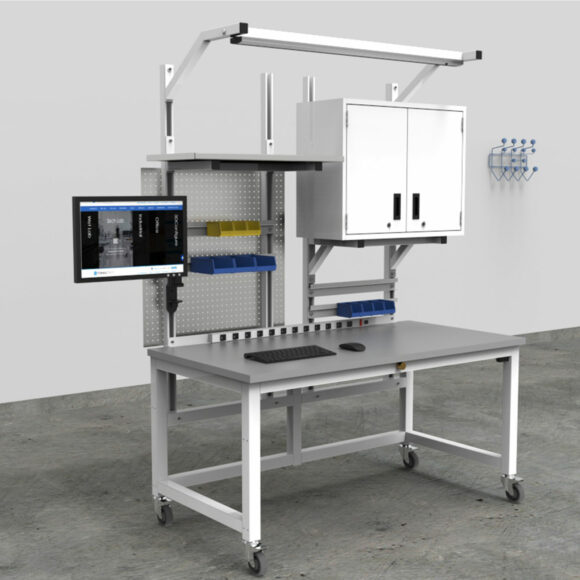AI in the Classroom is a Mixed Blessing – Offering Both Pedagogic Benefits and Troubling New Ethical Challenges
When we want to address the issues of using AI in the classroom, we should first take a moment to put ourselves in the shoes of the students – many of whom are bombarded with seductive, persuasive marketing messages from AI companies advertising on YouTube and other social media sites. These companies promise to help students improve their writing, come up with topics, and even create documents from scratch.
For today’s digital native students – many who have been encouraged to use AI-powered computer learning software as part of their learning experience (in some cases while using computers issued by the school system!) ‑ the siren song of AI-powered tools that offer a ‘shortcut’ to getting better grades may prove too seductive to resist.
Educators need to quickly come up to speed on the ethical implications of using AI technologies in the classroom and deliver a unified message to students about what is expected and what is not. (In many states, legislators are already stepping into the void, enacting new laws regulating AI in the classroom.
This may be easier said than done, however, given the rapid pace at which AI software is being added to commonly used software products, from Microsoft Office and browsers to Google Apps to writing plug-ins such as Grammarly.
Educators also need to think about any ‘double standard’ mixed messages they might be sending to their students. For example, classroom teachers may be actively encouraging students to use AI-based tutoring programs that help their students learn better, or adopting AI-based tools for their own use to speed up the time-consuming process of reading and grading student work.
In the minds of students, these AI use cases may create a ‘what’s good for the goose is good for the gander’ situation that justifies using AI in their own work.

What Can Academics Do to Control AI Plagiarism? The First Reaction is Often to “Fight Fire with Fire”
The initial response by many teachers confronted with the problem of their students using AI to create work presented as their own is to fight fire with fire – by validating if a student’s work is authentic by checking it via one of the new-generation plagiarism software detection tools (such as TurnItIn, Small SEO Tools, Paraphraser, or GPTZero) that also claim to be able to identify the presence of AI-generated writing.
Unfortunately, these detection algorithms are not foolproof and, in many cases, have created false positives, e.g. accusing students of AI-based plagiarism when they were, in fact, innocent.
This is an untenable situation that has led many academic institutions (including the University of Alabama, UC Berkeley, Northwestern, and SMU) to pause the use of TurnItIn AI-detection software (and others) pending the resolution of these false-positive issues, among other ethical concerns.

Will Widespread Adoption of AI Detection Software Result in Falsely Accused Students Having to “Prove” They Didn’t Use AI?
There is an escalating technology “war” brewing between AI detection systems trying to identify works created by AI and the newest editions of generative AI software, which are becoming better at creating more natural, human-like output that’s also harder to detect.
This never-ending battle may result in a perverse reality – one where the burden falls on students to prove their work is original and created without relying on input from AI software.
There are instances where this is already happening.
Some educators are encouraging students to write their assignments using software such as Google Docs, which annotates each item as it’s written.
Because Google Docs records each edit during the writing process, it’s possible to review the detailed history of a student’s writing process, including flagging large sections of text that were pasted into the document (which could have been unethically ‘lifted’ from another source, such as a Chat GPT-type AI assistant.)

The Luddite Response: Ban Computers and Smartphones from the Classroom Entirely
Is banning technology from the classroom the solution?
This might be an attractive “kill two birds with one stone” option for some educators, many of whom are already fed up with having to compete for their student’s attention with handheld screens during class.
Restricting the use of computers AND cell phones in the classroom is catching on in some elite private schools, such as Sydney Grammar, in Sydney, Australia, who point to fewer distractions in the classroom and improved learning outcomes when students take notes by hand. In late breaking news, the Los Angeles Unified School District (LAUSD) – the nation’s second largest K-12 system – voted to ban the use of cell phones by students during class time.
Banning the use of cell phones and computers in the classroom does make it easier for educators to perform formative and summative assessments – without the risk of AI tools influencing the outcomes.
However, some academic researchers point out that moving to oral presentations and handwritten exams might have negative consequences for some student cohorts, particularly those who lack experience in fast handwriting or non-native language speakers who might be unnerved making public presentations.

Where Do We Go from Here? How Will the Standards of Ethical Behavior Change Among Today’s Young AI-Native Students?
Educators stand at a crossroads.
Does the use of AI threaten the education of today’s youth, or should it be embraced as an enrichment tool to further student academic progress?
In some ways, the crux of this issue harkens back to an earlier time, when the sudden widespread availability of handheld calculators in the 1970s upended K-12 math education. It took time to develop a consensus on how to deal with the use of the then-new calculator technology in the classroom and to create revised curricula that emphasized higher mathematical principles over basic arithmetic.
We do not envy the job of academics trying to figure out an appropriate solution.
On the one hand, the overreliance on AI tools in the classroom could lead to a demonstrable reduction in learning achievement.
On the other hand, the adept use of AI tools is becoming a valuable new employable skill set for students entering the workforce.
Time will tell how this all pans out.
Hopefully, academics can get the pedagogic balance right.

Formaspace is Your Education Partner
Evolving Workspaces. It’s in our DNA.
Talk to your Formaspace Sales Representative or Strategic Dealer Partner today to learn more about how we can work together to make your next construction project or remodel a success.











